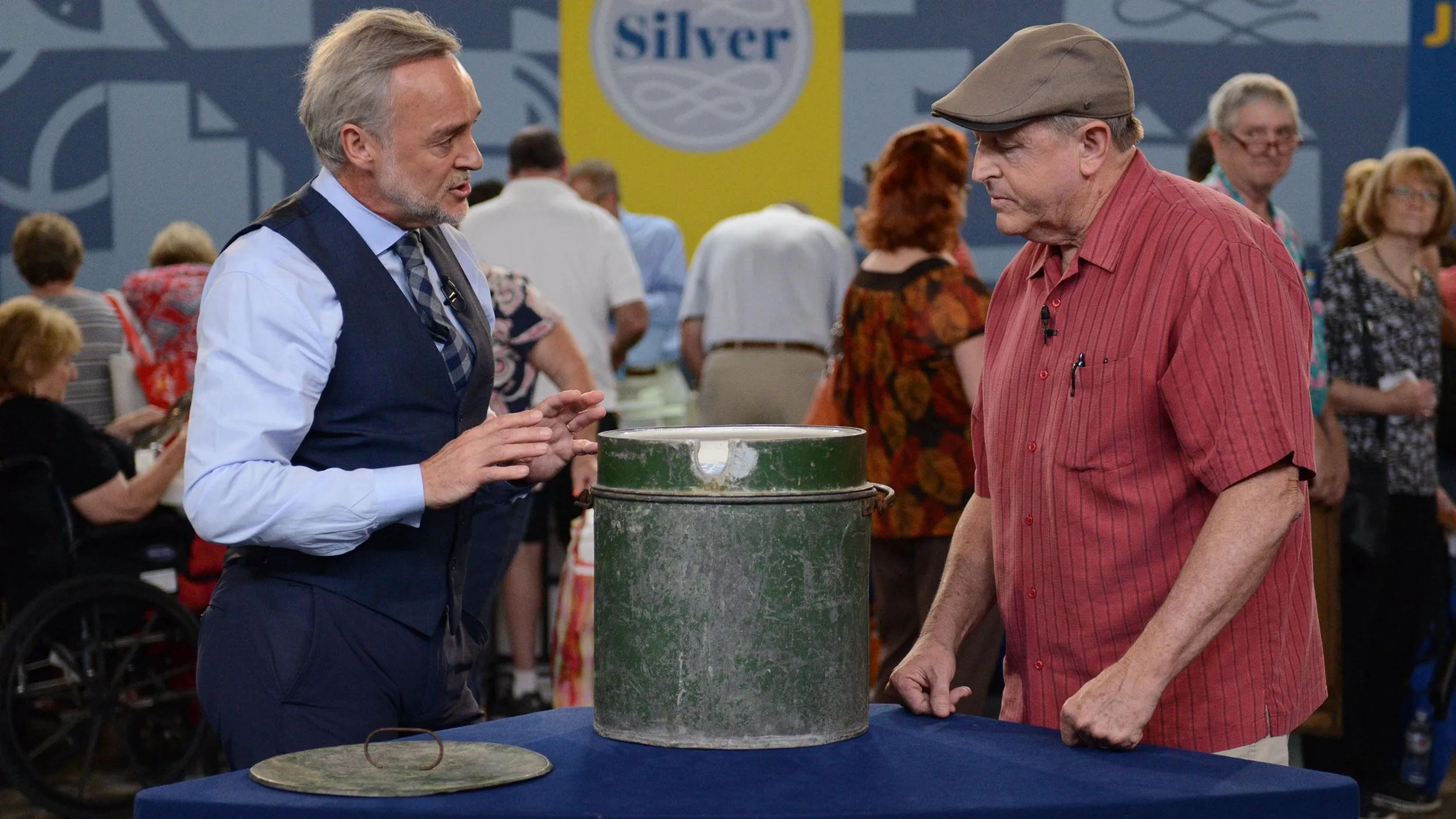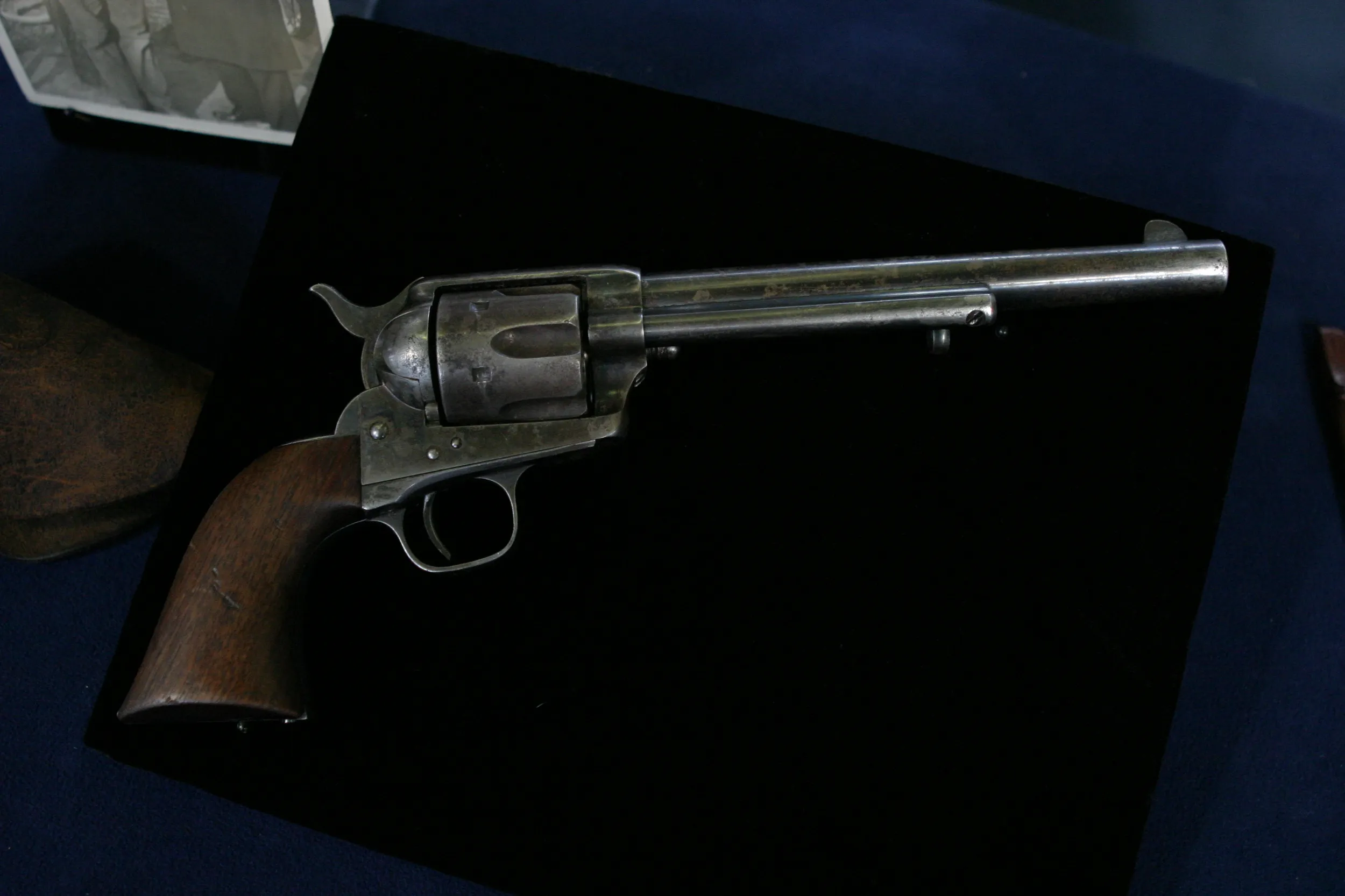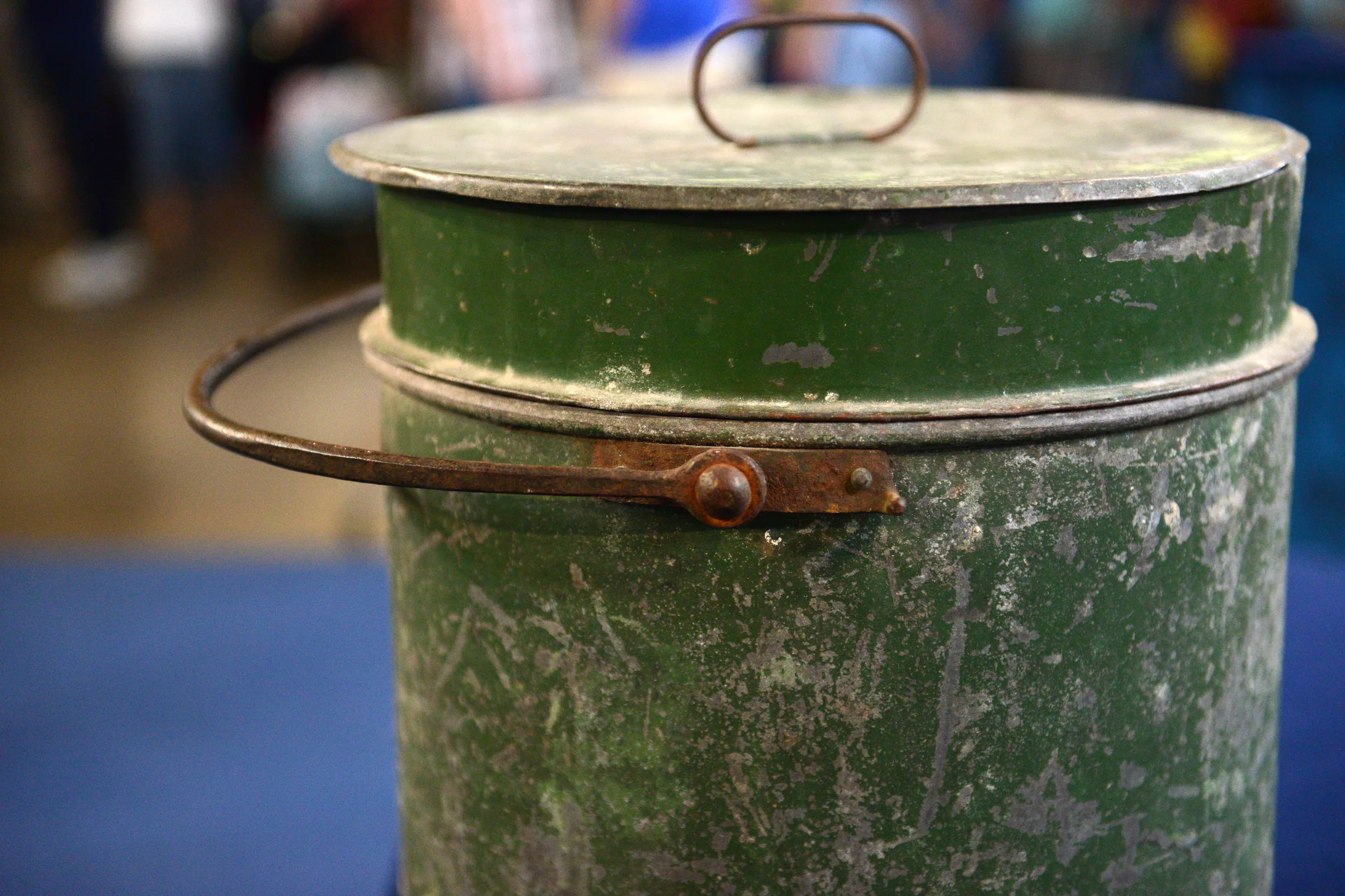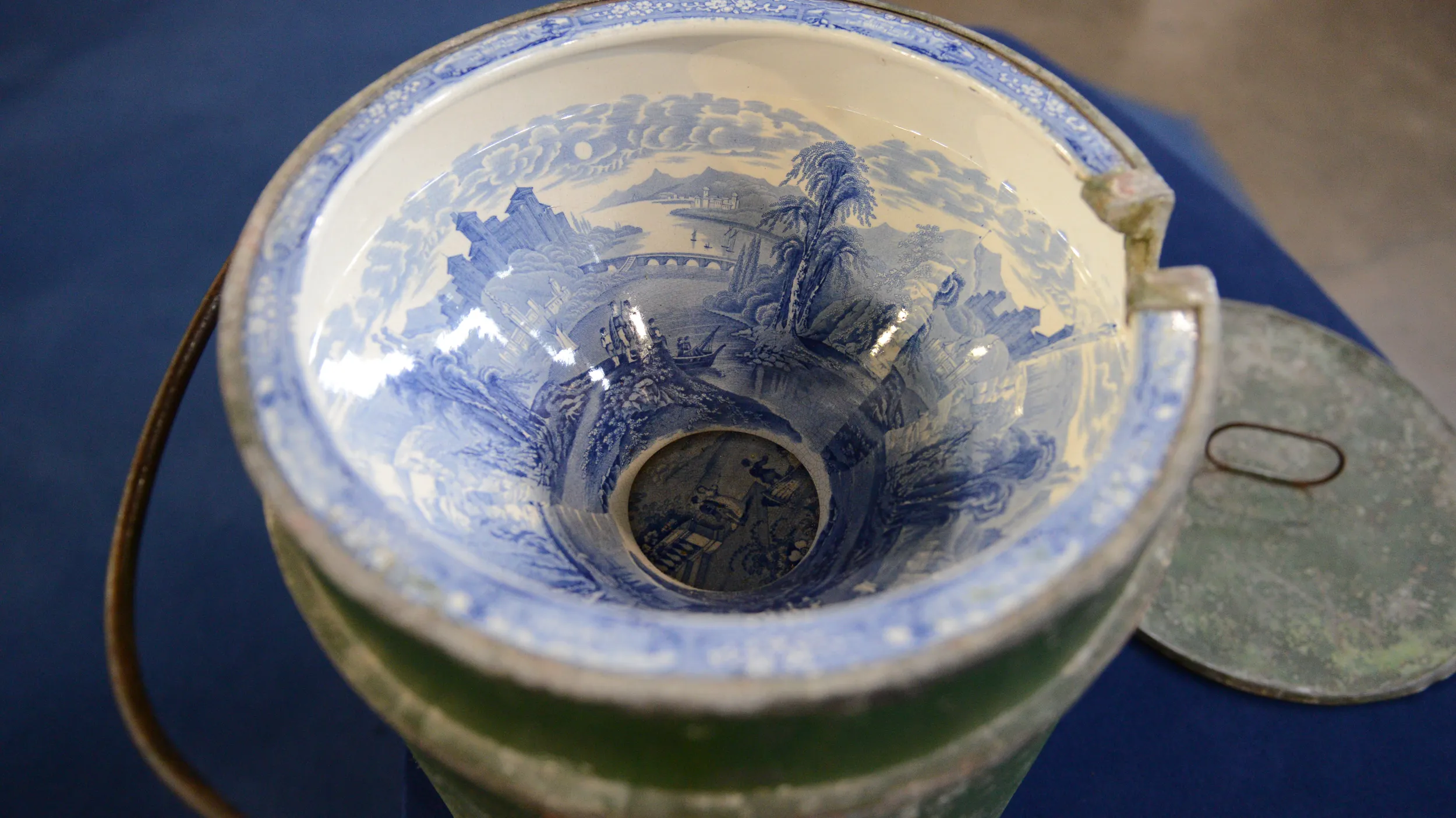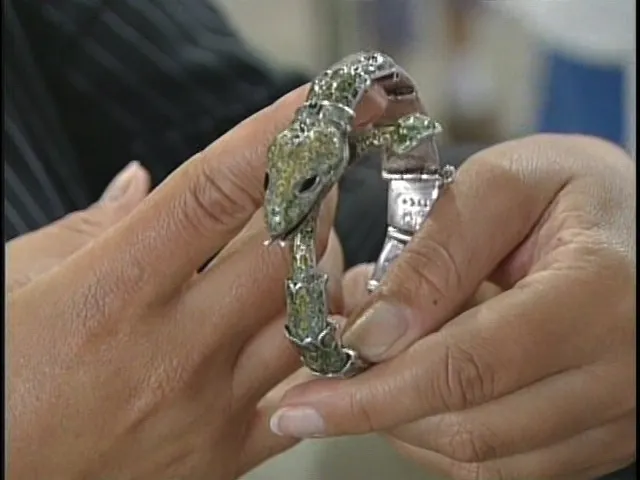GUEST: Well, I went to an estate sale here in Fort Worth, and found this underneath the table. Didn't think much of it. It was just a bucket. So I opened the lid and saw what was in it, and then asked them what they wanted for it, without letting them know that... what was in it. And they didn't look, so...
APPRAISER: Hold that thought-- let's have a look at what's in it. When you brought this to the table, it looks like an old bucket, kind of rusty metal. And then we looked inside it. And opening it up, you can see immediately this is something special. There is a mark on it, and it's the mark of one of the Mayer family of potters, Mayer of Burslem. And we can date this mark to the early Victorian years. Dates through about 1840. And I think the best way to describe it is a Victorian porta potty. Every large manufacturer in Staffordshire at the time, and Burslem, where this was made, had a line of what was called sanitary ware. The Mayer were probably best known... you see their mark on conventional blue and white printed ware-- plates, tableware, meat platters, things like that. And I think it's a fabulous example of early Victorian sanitary manufacturing. So let's take a look at how it works. This is the business end of it. And when it's done, there would be a jug nearby full of water that could be poured into it to flush it. The center is, as you can see, hinged on a counterbalance to flush into the bottom of the pan. I've seen Victorian sanitary ware over the years. Most of it is later into the Victorian period, and quite complicated, quite decorative. It's not unusual. I also think it's very discreet, which is one of the things I love about it. To me, this is made for the garden, possibly for use on a picnic, which the Victorians loved to do, or-- they had very large gardens-- perhaps in a conservatory or somewhere out in the corner, perfect for a garden party use. The paint on the outside is entirely original to the piece. This is painted metal, probably zinc. I don't think anything's been done to this since it was new in about 1840. And that's one of the things I love about it. How much did you pay for it in that sale?
GUEST: I paid $30.
APPRAISER: Well, I think you are, as we say, on the right side of it there. $30, how can you go wrong, for something from 1840 that's rare, and a great curiosity?
And I think it's a great auction item. I suspect you could estimate it for at least $1,000, and put a high estimate on it of perhaps $2,000.
GUEST: The artwork inside is pretty nice for it to be inside of a toilet bowl.

